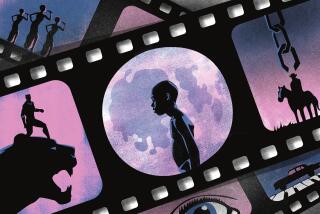Griffithâs âBirth of a Nationâ Reborn on Lumivision Disc
Everything youâve heard about D.W. Griffithâs âThe Birth of a Nationâ is true. A product of a racist era, it is painfully racist in the worst way: The director never seemed to realize just how condescending he was to African-Americans. Yet it is also a product of cinematic genius, a tour-de-force of the motion picture art, a revolutionary product of its time.
Lumivision has produced a special laser-disc edition of the 1915 epic silent film, with the young Lillian Gish, as revised by Griffith years later. It is superior to any other video version yet released (including Republicâs laser disc version from the Killiam Collection; the George Eastman House archive print used by Lumivision is at least a generation better).
It runs 200 minutes and was digitally transferred from a 35mm print at the George Eastman House at a rate of 16 frames per second.
In addition, the disc includes excerpts from the 1918 âThe Birth of a Race,â a syrupy film created as a response to Griffithâs propaganda. Unfortunately, it pales next to Griffithâs genius and is, in its own way, just as wrong-headed as âThe Birth of a Nation.â
The original Joseph Carl Breil score has been re-created from the original 1915 and 1921 public-domain orchestral parts, piano scores and cue sheets.
The score is a melange of bits and pieces from folk songs, battle songs and hymns popular during the Civil War period combined with music by Grieg--âIn the Hall of the Mountain Kingâ from âPeer Gyntâ becomes grotesque in its unintentional racism--Wagner (âThe Ride of the Valkyriesâ), Schubert, Schumann, Beethoven, Suppe, Bellini, Weber, Rossini, Mozart, Foster, and, of course, Tchaikovsky. Breil added some music of his own as well. Additional music for the disc was composed by R.J. Miller. The sharply produced computer-generated digital soundtrack sometimes sounds artificial, however.
While it may be laudable for Lumivision to have transfered the film at 16 frames per second, to call this the âcorrect frame rateâ when some scenes were obviously shot at 12 frames per second and appear speeded up is not quite âcorrectâ either.
Worse yet are the overwritten album notes trying to put Griffith and his film in proper historical context. The authors are so consumed with condemning Griffithâs racist interpretation of the Reconstruction era that they ignore his technical achievements.
Nonetheless, this special laser-disc edition ($49.95) gives us a chance to watch Griffithâs creation in all of its glory and infamy. As with Leni Riefenstahlâs âTriumph of the Will,â the pseudo-documentary on Hitlerâs 1934 Nuremberg rallies, we can marvel at the filmâs technical virtuosity as we condemn its infantile, distorted account of history.
More to Read
Only good movies
Get the Indie Focus newsletter, Mark Olsen's weekly guide to the world of cinema.
You may occasionally receive promotional content from the Los Angeles Times.








